Info On F. Pessoa:
Fernando Pessoa, born
Fernando António Nogueira de Seabra
Pessoa (
Portuguese pronunciation: [feɾˈnɐ̃du ɐ̃ˈtɔnju
nuˈgɐi̯ɾɐ dɨ siˈabɾɐ pɨˈsoɐ]) (June 13, 1888 – November 30, 1935),
was a Portuguese poet, writer, philosopher, literary critic and translator,
described as one of the most significant literary figures of the 20th century
and one of the greatest poets in the
Portuguese language. He also wrote in and
translated from English and French.
Early years in Durban
On 13 July 1893, when Pessoa was five, his father, Joaquim de Seabra Pessoa,
died of
tuberculosis. The
following year, on 2 January, his younger brother Jorge, aged only one, also
died. His mother, Maria Madalena Pinheiro Nogueira, married again in December
1895. In the beginning of 1896, he moved with his mother to
Durban, capital of the former British
Colony of Natal, where
his stepfather João Miguel dos Santos Rosa, a military officer, had been
appointed
Portuguese consul.
The young Pessoa received his early education at St. Joseph Convent School, a
Catholic grammar school run by Irish and French nuns. He moved to
Durban High
School in April, 1899, becoming fluent in English and developing an
appreciation for English literature. During the
Matriculation Examination, held at
the time by the then University of the Cape of Good Hope, forerunner of the
University
of Cape Town, in November 1903, he was awarded the recently-created
Queen Victoria Memorial
Prize for best paper in English. While preparing to enter university, he also
attended the Durban Commercial School during one year, in the evening shift.
Meanwhile, he started writing short stories in English, some under the name of
David Merrick, many of which he left unfinished.
[1]
At the age of sixteen,
The Natal Mercury[2] (July 6, 1904
edition) published his poem "Hillier did first usurp the realms of rhyme...",
under the name of Charles Robert Anon, along with a brief introductory text: "I
read with great amusement...". In December,
The Durban High School
Magazine published his essay "Macaulay".
[3] From February to
June, 1905, in the section "The Man in the Moon,"
The Natal Mercury also
published at least four sonnets by Fernando Pessoa: "Joseph Chamberlain", "To
England I", "To England II" and "Liberty".
[4] His poems often
carried humorous versions of
Anon
as the author's name. Pessoa started using
pen names quite young. The first
one, still in his childhood, was Chevalier de Pas, supposedly a French noble. In
addition to David Merrick and Charles Robert Anon, the young writer also signed
up, among other pen names, as Horace James Faber and Alexander Search, another
meaningful
pseudonym.
-
-
- The young Pessoa as seen by a schoolfellow
-
- "I cannot tell you exactly how long I knew him, but the period during which
I received most of my impressions of him was the whole of the year 1904 when we
were at school together. How old he was at this time I don’t know, but judge him
to have 15 or 16."
-
- "He was pale and thin and appeared physically to be very imperfectly
developed. He had a narrow and contracted chest and was inclined to stoop. He
had a peculiar walk and some defect in his eyesight gave to his eyes also a
peculiar appearance, the lids seemed to drop over the eyes."
-
- "He was regarded as a brilliant clever boy as, in spite of the fact that he
had not spoken English in his early years, he had learned it so rapidly and so
well that he had a splendid style in that language. Although younger than his
schoolfellows of the same class he appeared to have no difficulty in keeping up
with and surpassing them in work. For one of his age, he thought much and deeply
and in a letter to me once complained of 'spiritual and material encumbrances of
most especial adverseness'."
-
- "He took no part in athletic sports of any kind and I think his spare time
was spent on reading. We generally considered that he worked far too much and
that he would ruin his health by so doing."
-
-
- --Clifford E. Geerdts, "Letter to Dr. Faustino Antunes", April 10,
1907.[5]
Ten years after his arrival, he sailed for
Lisbon via the
Suez Canal on board the "Herzog", leaving
Durban for good at the age of seventeen.
This journey inspired the poems "Opiário" (dedicated to his friend, the poet and
writer
Mário de Sá-Carneiro) published
in March, 1915, in
Orpheu nr.1
[6] and "Ode Marítima"
(dedicated to the futurist painter Santa Rita Pintor) published in June, 1915,
in
Orpheu nr.2
[7] by his
heteronym
Álvaro de
Campos.
Adult life in Lisbon
While his family remained in
South Africa, Pessoa returned to
Lisbon in 1905 to study diplomacy. After a period of
illness, and two years of poor results, a
student strike against
the dictatorship of Prime Minister
João Franco put an end to his studies. Pessoa
became a self student, a devoted reader who spent a lot of time at the library.
In August, 1907, he started working at R.G. Dun & Company, an American
mercantile information agency (currently D&B, Dun & Bradstreet). His
grandmother died in September and left him a small inheritance, which he spent
on setting up his own publishing house, the «Empreza Ibis». The venture was not
a success and closed down in 1910, but the name
ibis,
[8] the sacred bird of
Ancient Egypt and
inventor of the
alphabet in
Greek mythology, would
remain an important symbolic reference for him.
Upon his return to Lisbon, Pessoa began to complement his British education
with Portuguese culture, as an autodidact. Pre-revolutionary atmosphere
surrounding the assassination of King
Carlos I and Crown Prince
Luis Filipe, in
1908, and patriotic environment resulting from the successful
republican revolution, in 1910,
certainly exerted a relevant influence in the formation of the writer. His
stepuncle Henrique dos Santos Rosa, a retired general and poet, introduced the
young Pessoa to Portuguese poetry, notably the romantics and symbolists of 19th
century.
[9] In 1912, Fernando
Pessoa entered the literary world with a critical essay, published in the
cultural journal
A Águia, which triggered one of the most important
literary debates in the Portuguese intellectual world of 20th century: the
polemic regarding a super-
Camões. In 1915 a group of artists and poets,
including Fernando Pessoa,
Mário de Sá-Carneiro and
Almada
Negreiros, created the literary magazine
Orpheu,
[10] which introduced
modernist
literature to Portugal. Only two issues were published (Jan-Feb-Mar and
Apr-May-Jun, 1915), the third failed to appear due to funding difficulties. Lost
for many years, this issue was finally recovered and published in 1984.
[11] Among other
writers and poets,
Orpheu published Pessoa,
orthonym, and the modernist
heteronym, Álvaro de Campos.
Pessoa also founded the literary review
Athena (1924–25), which
published the
heteronym Ricardo Reis. Along with his
activity as free-lance commercial translator, Fernando Pessoa undertook intense
activity as a writer and literary critic, contributing to journals and magazines
such as
A Águia (1912–13),
A Renascença (1914),
Orpheu
(1915),
Exílio (1916),
Centauro (1916),
Portugal Futurista
(1917),
Ressurreição (1920),
Contemporânea (1922–26),
Athena (1924–25),
Presença (1927–34) and
Sudoeste (1935).
He also published as a political analyst and literary critic in journals and
newspapers such as
Teatro (1913),
O Jornal (1915),
Acção
(1919–20),
Diário de Lisboa (1924–35),
Sol (1926),
Revista de
Comércio e Contabilidade (1926) and
Fama (1932–33).
Pessoa the
flâneur
If
Franz Kafka is the
writer of
Prague, Fernando Pessoa is
certainly the writer of
Lisbon. After
his return to Portugal, when he was seventeen, Pessoa barely left his beloved
city, which inspired the poems "Lisbon Revisited" (1923 and 1926), by his
heteronym
Álvaro de
Campos. From 1905 to 1921, when his family returned from
Pretoria after the death of his stepfather, he lived
in fifteen different places around the city,
[12] moving from a
rented room to another according to his financial troubles and the troubles of
the young
Portuguese Republic.
Pessoa had the
flâneur's
regard, namely through the eyes of
Bernardo Soares, another of his
heteronyms.
[13] This character was
supposedly an accountant, working to
Vasques, the boss of the office
located in Douradores Street.
Bernardo Soares also supposedly lived in
the same downtown street, a world that Pessoa knew quite well due to his long
career as free lance correspondence translator. In fact, from 1907 until his
death, in 1935, Pessoa worked in twenty one firms located in Lisbon's downtown,
sometimes in two or three of them simultaneously.
[14] In
The Book of
Disquiet,
Bernardo Soares describes some of those typical places
and its "atmosphere".
Pessoa was a frequent customer at Martinho da Arcada, a centennial
coffeehouse in Comercio Square, surrounded by ministries, almost an "office" for
his private business and literary concerns, where he used to meet friends in the
1920s. The statue of Fernando Pessoa (below) can be seen outside
A
Brasileira, one of the preferred places of the young writers and artists of
the
group
of orpheu during the 1910s. This coffeehouse, in the
aristocratic
district of
Chiado, is quite close to
Pessoa's birthplace: 4, Largo de São Carlos (in front of the Opera House),
[15] one of the most
elegant neighborhoods
of
Lisbon.
[16]
In 1925, Pessoa wrote in English a guidebook to Lisbon but it remained
unpublished until 1992.
[17][18]
Literature and
occultism
Pessoa translated into English some Portuguese books
[19] and from English
The Scarlet
Letter by
Nathaniel Hawthorne[20] and the poems "
The Raven", "
Annabel Lee" and "
Ulalume"
[21] by
Edgar Allan Poe who,
along with
Walt Whitman,
strongly influenced him. He also translated into Portuguese a number of books by
leading
theosophists such as
C. W.
Leadbeater and
Annie
Besant.
[22]
In 1912-1914, while living with his aunt "Anica" and cousins,
[23] Pessoa took part
in "semi-spiritualist sessions" that were carried out at home. But he was
considered a "delaying element" by the other members of the session. Pessoa's
interest in
spiritualism was
truly awakened in the second half of 1915, when he translated a series of
esoteric books. This was further deepened in the end of March 1916, when he
suddenly started having experiences where he became a
medium. The experiences were revealed through
automatic writing.
In June, 24, Pessoa wrote an impressive letter to his aunt, then living in
Switzerland with her daughter and son in law, in which he describes this
"mystery case" that surprised him.
Besides
automatic
writing, Pessoa also had "astral" or "etherial visions" and was able to see
"magnetic auras" similar to radiographic images. He felt "more curiosity than
scare", but was respectful towards this phenomenon and asked secrecy, because
"there is no advantage, but a lot of disadvantages" in speaking about this.
Mediumship exerted a strong
influence in Pessoa writings, who felt "sometimes suddenly being owned by
something else" or having a "very curious sensation" in the right arm that "was
lifted into the air without my will". Looking in the mirror, Pessoa saw several
times the
heteronyms, his "face fading out" and
being replaced by the one of "a bearded man", or another one, four men in
total.
[24]
Pessoa also developed a strong interest in
astrology, becoming a competent astrologist. He
elaborated more than 1,500
astrological charts, of well-known people
like
William
Shakespeare,
Lord Byron,
Oscar Wilde,
Chopin,
Maximilien Robespierre,
Napoleon I,
Wilhelm II,
Leopold II of
Belgium,
Victor Emmanuel III,
Benito Mussolini,
Alfonso
XIII, or the Kings
Sebastian and
Carlos of
Portugal and
Salazar. In 1915, Pessoa
created the
heteronym Raphael
Baldaya, who was an astrologist, and planned to write in his name "System of
Astrology" and "Introduction to the Study of Occultism". Pessoa established the
pricing of his astrological services from 500 to 5,000
réis and made
horoscopes of costumers, friends and also himself and, astonishingly, of the
heteronyms.
Born on June, 13, Pessoa was native of Gemini and had scorpio as rising sign.
The characters of the main heteronyms were inspired by the four astral elements:
air, fire, water and earth. It means that Pessoa and his heteronyms altogether
comprised the full principles of ancient knowledge. Those heteronyms were
designed according to their
horoscopes, all include
Mercury, the planet of literature. Astrology
was part of his everyday life and Pessoa kept that interest until his death,
which he was able to predict with a certain degree of accuracy.
[25]
As a
mysticist, Pessoa was an enthusiast of
esotericism,
occultism,
hermetism and
alchemy. Along with
spiritualism and
astrology, he also paid attention to
rosicrucianism,
neopaganism and
freemasonry, which strongly
influenced his work. His interest in
occultism led Pessoa to correspond with
Aleister Crowley.
Later he helped Crowley plan an elaborate fake suicide when he visited Portugal
in 1930.
[26] Pessoa translated
Crowley's poem "Hymn To Pan"
[27] into Portuguese,
and the catalogue of Pessoa's library shows that he possessed Crowley's books
Magick in Theory and Practice and
Confessions. Pessoa also wrote
on Crowley's doctrine of
Thelema in
several fragments, including
Moral.
[28]
Writing a lifetime
In his early years, Pessoa was influenced by major English classic poets as
Shakespeare,
Milton or
Spenser and romantics
like
Wordsworth,
Coleridge,
Byron,
Shelley and
Keats. Later, when he returned to Lisbon for
good, he was influenced by French symbolists
Charles Baudelaire,
Maurice Rollinat,
Stéphane
Mallarmé; mainly by Portuguese poets as
Antero de Quental,
Gomes Leal,
Cesário Verde,
António Nobre,
Camilo Pessanha or
Teixeira de Pascoaes. Later on, he was also influenced by modernists as
Yeats,
Ezra Pound and
T. S. Eliot, among many other
writers.
[1]
During
World War I,
Pessoa wrote to a number of British publishers in order to print his collection
of English verse
The Mad Fiddler (unpublished during his lifetime), but
it was refused. However, in 1920, the prestigious literary journal
Athenaeum included one of those
poems.
[29] Since the British
publication failed, in 1918 Pessoa published in Lisbon two slim volumes of
English verse:
Antinous[30] and
35 Sonnets,
[31] received by the
British literary press without enthusiasm.
[32] Along with some
friends, he founded another publishing house, Olisipo, which published in 1921 a
further two English poetry volumes:
English Poems I–II and
English
Poems III by Fernando Pessoa.
Politically, Pessoa considered himself a "mystical nationalist" and, despite
his monarchist sympathies, he didn't favour the restoration of the monarchy. He
described himself as conservative within the British tradition. He was an
outspoken elitist and aligned himself against communism, socialism, fascism and
Catholicism.
[33] He supported the
military coups of 1917 and 1926, and wrote a pamphlet in 1928 supportive of the
Military Dictatorship but after the establishment of the New State, in 1933,
Pessoa become disenchanted with the regime and wrote critically of Salazar and
fascism in general. In the beginning of 1935, Pessoa was banned by the Salazar
regimen, after he wrote in defense of Freemasonry.
[34][35]
Pessoa died of
cirrhosis in
1935, at the age of forty-seven, with only one book published in Portuguese:
"
Mensagem" (Message). However, he left a lifetime of unpublished and
unfinished work (over 25,000 pages manuscript and typed that have been housed in
the Portuguese National Library since 1988). The heavy burden of editing this
huge work is still in progress. In 1988 (the centenary of his birth), Pessoa's
remains were moved to the
Hieronymites Monastery, in Lisbon,
where
Vasco da Gama,
Luís de Camões,
and
Alexandre
Herculano are also buried. Pessoa's portrait was on the 100
-escudo
banknote.
Extracts Source:
http://en.wikipedia.org/wiki/Fernando_Pessoa
Edition:
Areal Editores
 |
| Pessoa in 1928, drinking a glass of red wine in Lisbon's downtown |

+001.jpg)
+001.jpg)
+001.jpg)
.bmp)
+001.jpg)
+001.jpg)
+001.jpg)
+001.jpg)

+001.jpg)
+001.jpg)
+001.jpg)
+001.jpg)

+001.jpg)
+001.jpg)
+001.jpg)
+001.jpg)
+001.jpg)
+001.jpg)
+001.jpg)
+001.jpg)
+001.jpg)

+001.jpg)
+001.jpg)

+001.jpg)
+001.jpg)

+001.jpg)
+001.jpg)
+001.jpg)

.jpg)
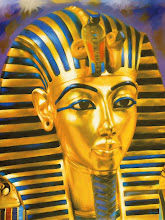.jpg)

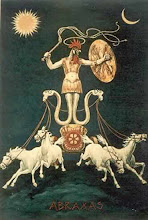

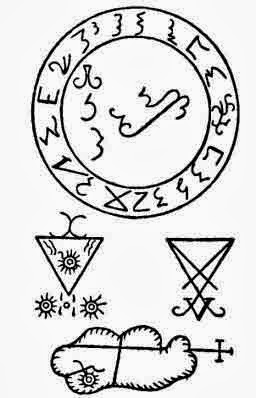



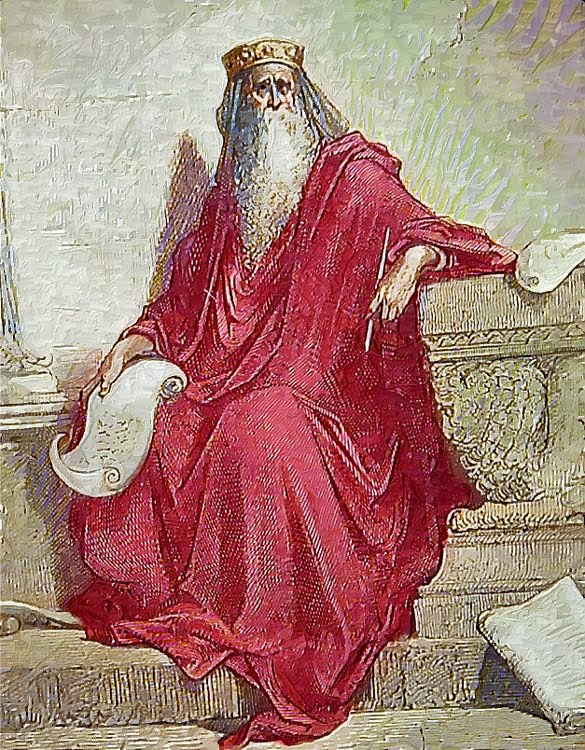


+001.jpg)
+001.jpg)
+001.jpg)



+001.jpg)





+001.jpg)
+001.jpg)

+001.jpg)
+001.jpg)






+001.jpg)
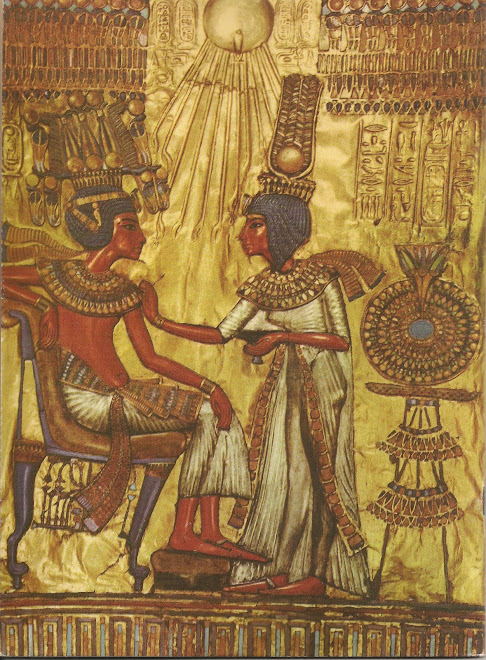.jpg)


